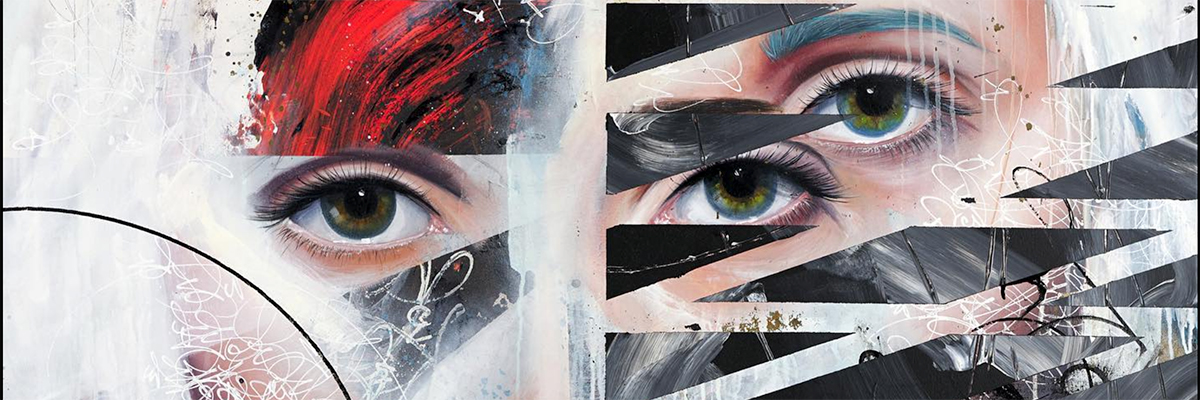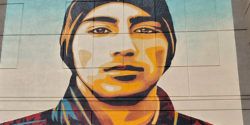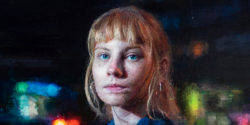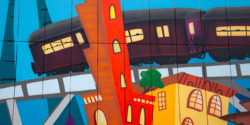Poesia and EKG Talk to BSA about an Audacious Survey
A new show organized by Poesia, a San Francisco based graffiti artist and founder of the site Graffuturism, pulls together one hundred or so artists from eighteen countries with the goal of mapping one constellation in the cosmos – a global survey of urban artists that hopes to articulate a body of aesthetics he’s calling Othercontemporary. And why not? Audacity and vision are qualities these times call for and if successful could lead to a clearer understanding of the trends, techniques, practices, and narratives underlying what has been happening on the streets for the last half century.
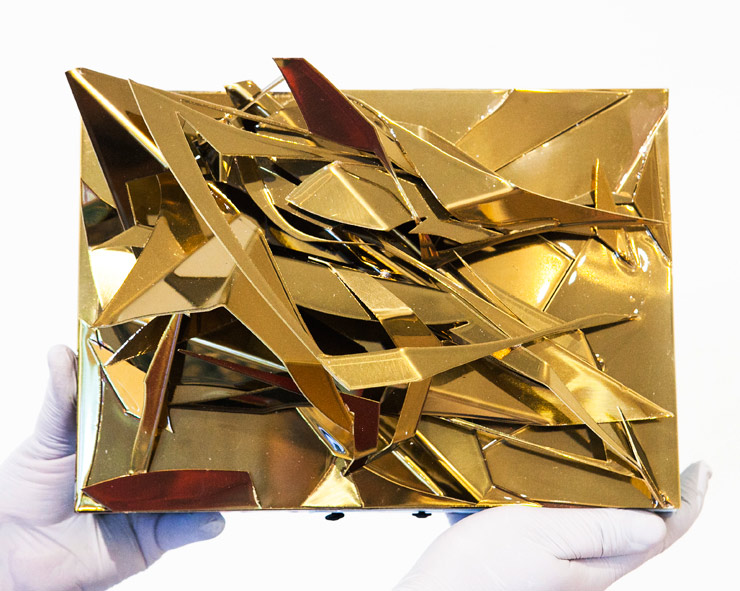
Kwest (photo © Brock Brake)
With New York artist/historian/semiotic explorer EKG as a guide, the two have been synthesizing their findings and discovering the genuine firing of synapses that indicate they are uncovering the electrical impulses that have made graffiti / street art/ urban art feel so completely relevant to the last two generations. A “Major Minority” hopes to chart the course for the third.
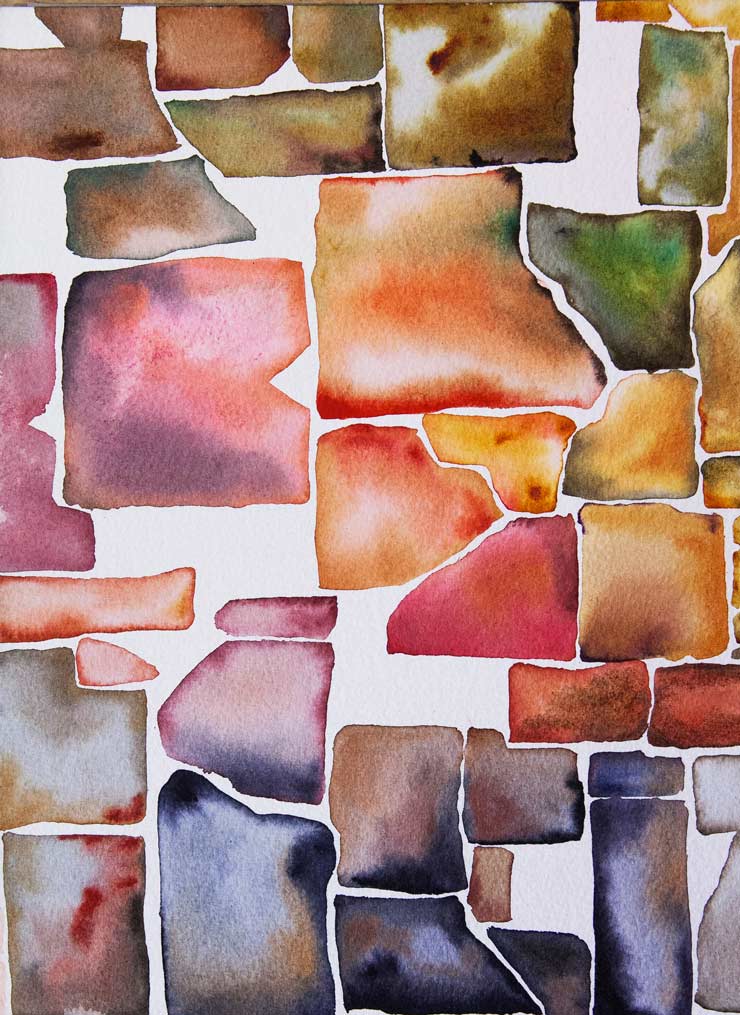
Mags (photo © Brock Brake)
Poesia invites you here to take a look at some of the pieces that will be on display, as shot by Brock Brake. Brooklyn Street Art asked Poesia and EKG about the survey and to make some conjecture about the way forward.
Brooklyn Street Art: Each generation and movement is defined and labeled by its participants, peers, and observers. In your treatise on this moment and this collection of artists you say that Stefano Antonelli coined the term Othercontemporary to perhaps set it apart from Contemporary. Why does this term sound appropriate to you?
Poesia: I had initially used the term Neo-Contemporary. After a brief discussion amongst some peers Stefano mentioned this term – it seemed the most accurate out of the terms being discussed. I feel it’s important because it starts a conversation about something other than contemporary art, and describes rather bluntly our separation from contemporary art, yet defines the contemporary nature of our art form. I have grown tired of comparing what we do to contemporary art, maybe this term will get people talking about something more present.
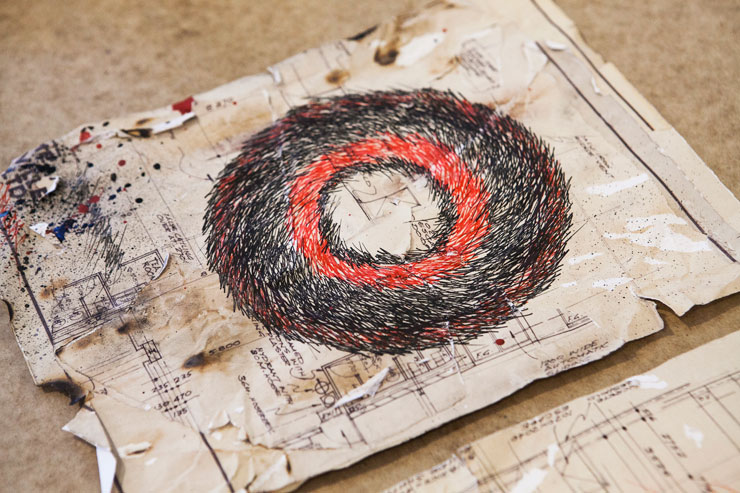
Slicer (photo © Brock Brake)
Brooklyn Street Art: Take a guess and swing the bat wide, why has the established art world taken so long to give recognition to the urban artist?
Poesia: Canonization usually takes place long after the genuine moments of art movements, or when they are at their peak. Its no different even in today’s Internet era, even with all the information at their fingertips academics won’t ever understand why a 12 year old child and a 50 year old adult writes on walls. Its easier to make use of their MFAs by extending the reach of the contemporary art conversation than it is to look at society and to try to understand the writing on the walls.
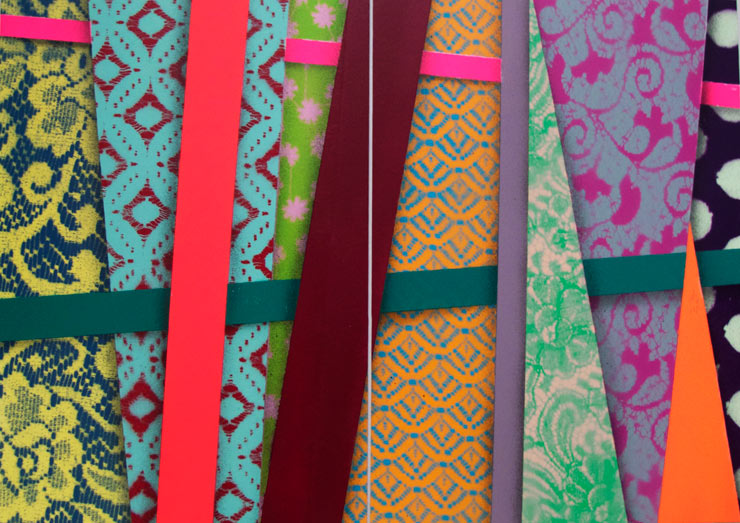
Hellbent (photo © Hellbent)
Brooklyn Street Art: Has something happened in the last 5-10 years that has caused so many urban/street/graffiti artists to make more geometric and abstract work that usually avoids the organic, figurative, and pop? Any idea what is driving it?
Poesia: It’s a culmination – one of those things where maybe all the right ingredients are there and it happens.
Graffiti, being an abstract art form in its nature, lends itself to pure abstraction. Experimentation with the letterform usually takes place more with color and shape than it does conceptually or from a representational perspective. Additionally with the birth of Street Art it opened up the playing field a bit. Artists now were forced to compete visually with representational imagery on walls. It has allowed many artists to leave letterform and the rectangular space of a piece or even “wild style”. The horizontal rectangle was replaced with the square or vertical rectangle – that also pushed for the evolution of the artist.
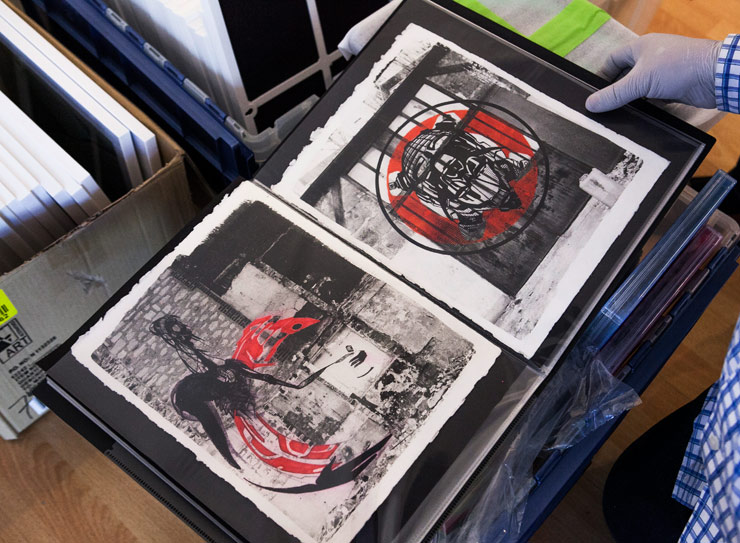
Silvio Magaglio (photo © Brock Brake)
Brooklyn Street Art: What will a viewer begin to realize when looking over the constellation of works in this show?
Poesia: That painting is alive, and urban art seems to be the most relevant embodiment of this. This post-historical art form seems to be sending a message that there is something left in the visual image and its power. The goal was to show the widest spectrum possible from figurative to minimal in the area of Urban Art and I think we accomplished that.
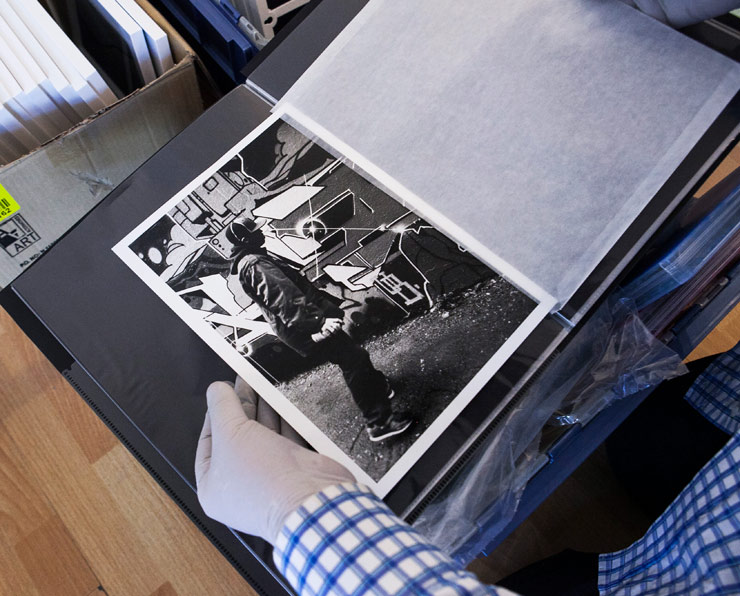
Silvio Magaglio (photo © Brock Brake)
Brooklyn Street Art: Can you speak about the “unique participatory and non-exclusionary nature” of urban/street/graffiti art practices?
EKG: Graffiti/Street Art (here defined as the public surfaces they affix themselves to, the container superseding the content, the medium as the message) is a broadcast channel that will not exclude anyone who wants to participate. Anybody with a passion to be seen and heard can broadcast on the graffiti/street art wavelength, as long as they are driven to take the risk of breaking the law in order to make their aesthetic statement.
When someone illegally transmits a signal on a public surface, aka a wall or monitor, there is no editorial hierarchy, no censorship board, no review panel, and no proofreaders. It is an individualistic and anarchistic means of expression. In order to transmit your mark, you don’t have to pay anyone, you don’t have to ask for permission, you don’t have to take a vote, you don’t have to take into account anyone else’s approval or opinion about your message.
At heart, graffiti/street art are visual civil disobedience, no matter the initial conscious intention of the mark maker, although a combination of action and intention can make the mark more meaningful to the receiver once they learn more about the broadcaster.
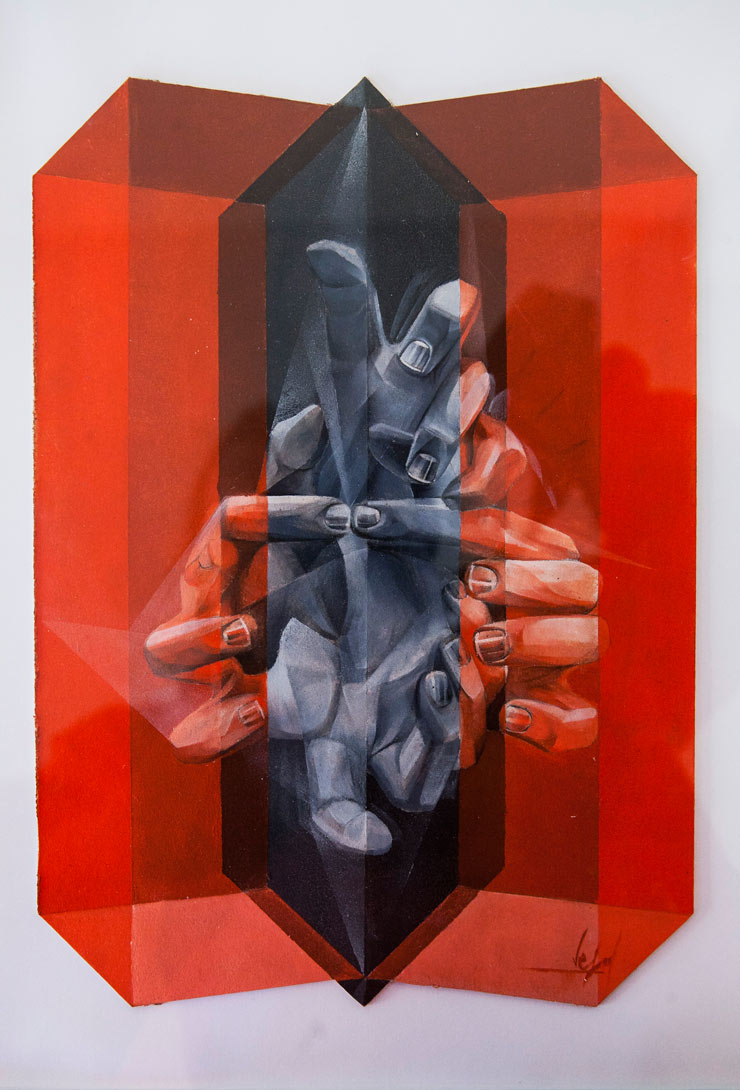
Vsod (photo © Brock Brake)
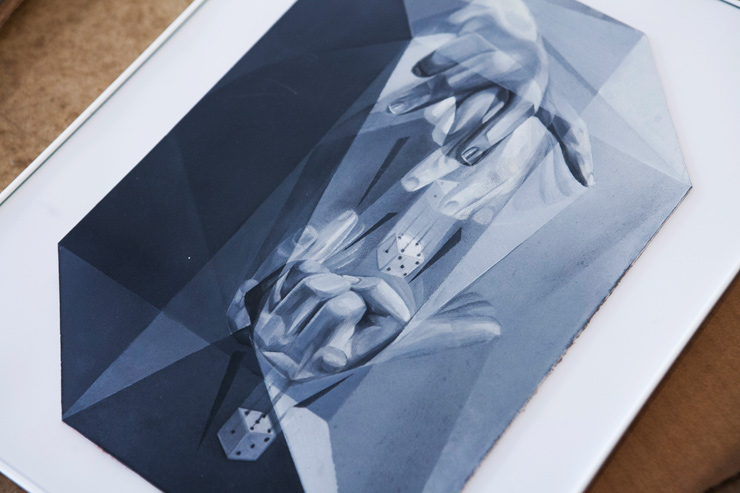
Vsod (photo © Brock Brake)
Brooklyn Street Art: “Illegal” and “transgressive” are two root words that reappear in your discussion of the collection. Did this movement germinate from anti-establishment sentiments, marginalized populations?
EKG: Doing anything illegal can be considered transgressive, but, more specifically for this discussion, illegal aesthetic manifestations are a minor infrastructural irritant that accrue a massive semiotic tumescence of cultural weight.
Currently incarcerated under the simplistic and myopic legal category defined as vandalism, aka criminal mischief, illegal aesthetic manifestations should instead be interpreted as more of a cultural statement than actually being a debilitating crime that selfishly and meaninglessly attacks a particular individual or society as a whole, as has been promoted by institutional authorities protecting the status quo.
The Original Writers discovered that Graffiti was a powerful means to: express rebellious dissatisfaction on political, economic, societal and cultural levels; define one’s identity as a powerful entity that was omnipresent, by proxy omniscient; delineate physical and semiotic territories that were theirs as opposed to their foes or society at large; connect with other members of their age group to form alternative communities of like-minds; and gain recognition with their peers and the public overall.
Like the seers who were channeling the oracles of our time, the old school original writers instinctually discovered an art form that continues to engage and challenge our global culture. Fifty years later the movement is still kept alive inside and outside by practitioners of all ages, styles, and intentions. Graffiti is no longer perceived as merely vandalism perpetrated by megalomaniac antisocial teens, but a positive and powerful cultural change agent practiced by conscious objectors of all ages.
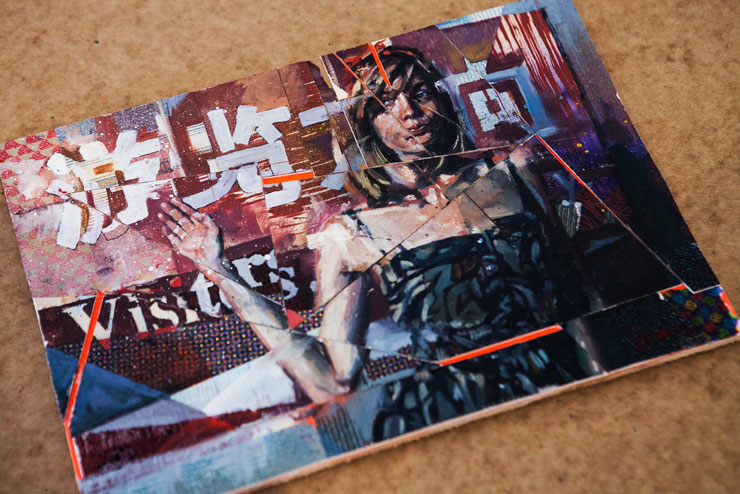
Drew Young (photo © Brock Brake)
Brooklyn Street Art: Specifics please: please place an artists name next to each of the following word whose work comes to mind.
Poesia: Okay, here are examples.
Activist: Boniface Mwangi
Idealist: Moneyless
Geometric: Nawer
Minimal: Christopher Derek Bruno
Expressionist: Jaybo Monk
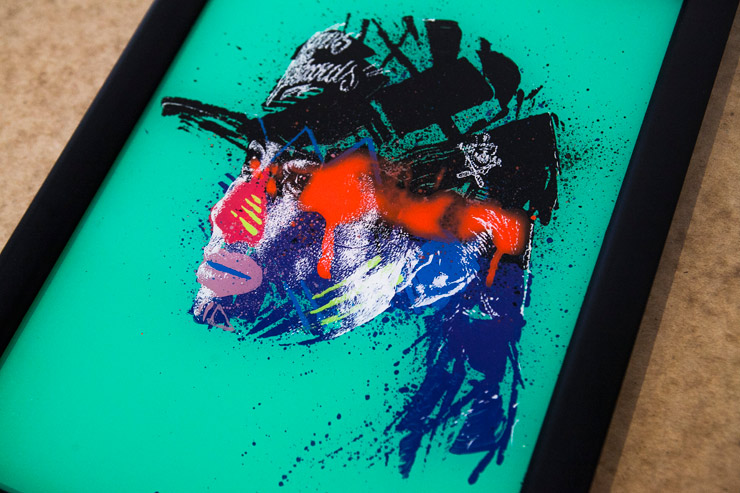
Askew (photo © Brock Brake)
Brooklyn Street Art: Sometimes it appears that the street is providing the stage for an explosion/implosion of all other historical art movements coalescing and deconstructing and recombining and mutating before us. Perhaps it’s because the street is reflecting society and we are all drinking from the Internet River. Maybe we’re witnessing a true globalism. You can say the movement on the street has roots in graffiti, and we would agree. But is it even possible to make sense of what is happening right now?
Poesia: I can only be a participant in this moment and hope to engage the conversation in real time versus when it won’t matter anymore. I think Urban Art is one of many emerging art forms that have been bubbling on the surface for a while now. As the generation shift takes place we will be accepted at the moment when we are irrelevant, as so many art forms before us. This makes today more important than tomorrow. I don’t know if I have the capability to make sense of it all, but I appreciate every second of it.
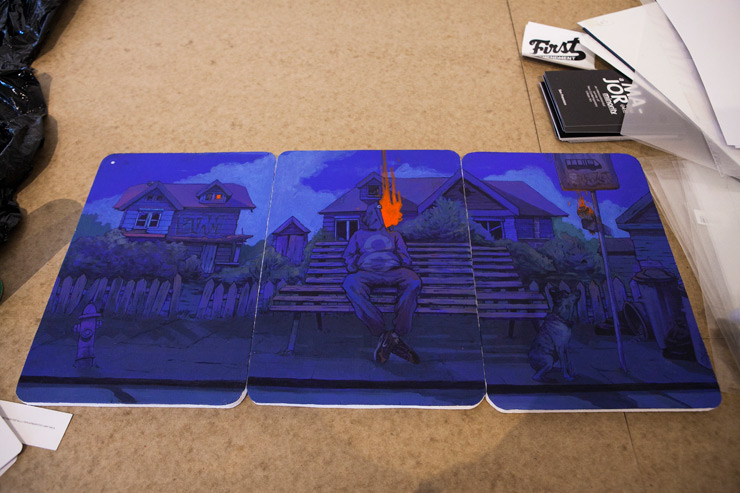
Bezt Etam (photo © Brock Brake)

Vincent Abadie Hafez Zepha (photo © Brock Brake)
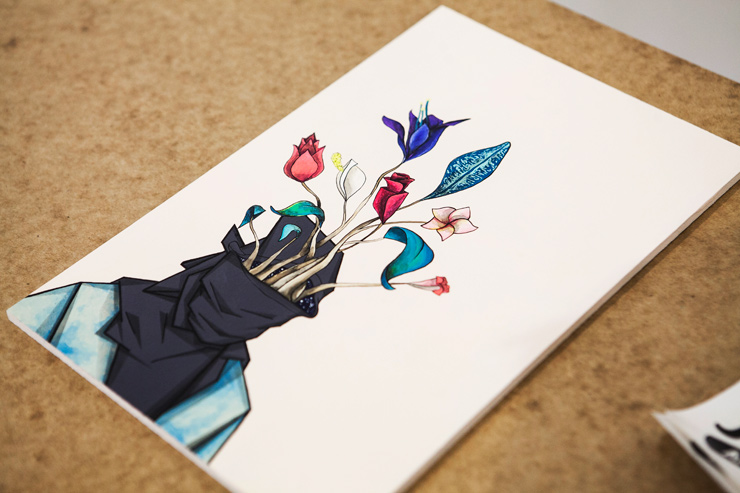
Thiago Toes (photo © Brock Brake)

Sat One (photo © Brock Brake)
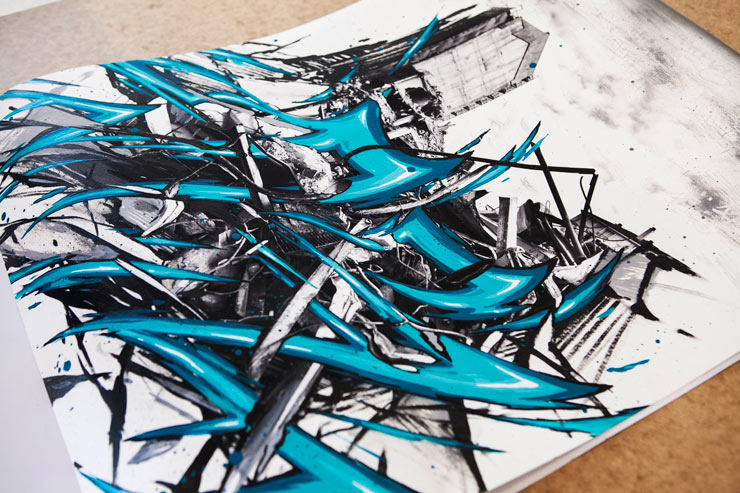
Katre (photo © Brock Brake)
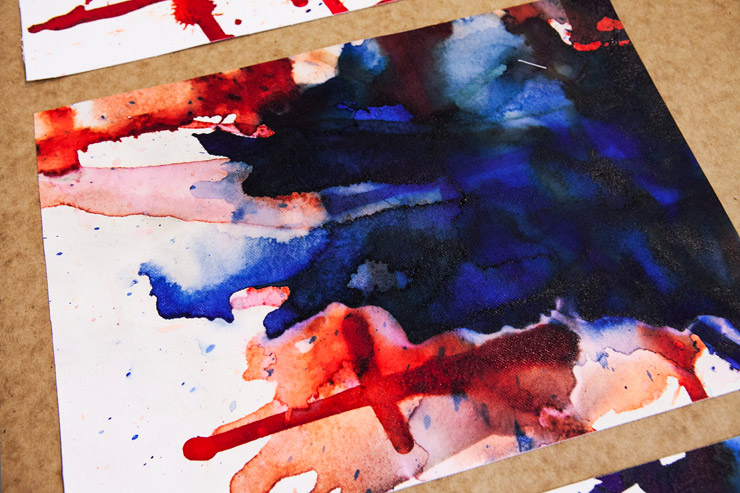
Sowat (photo © Brock Brake)
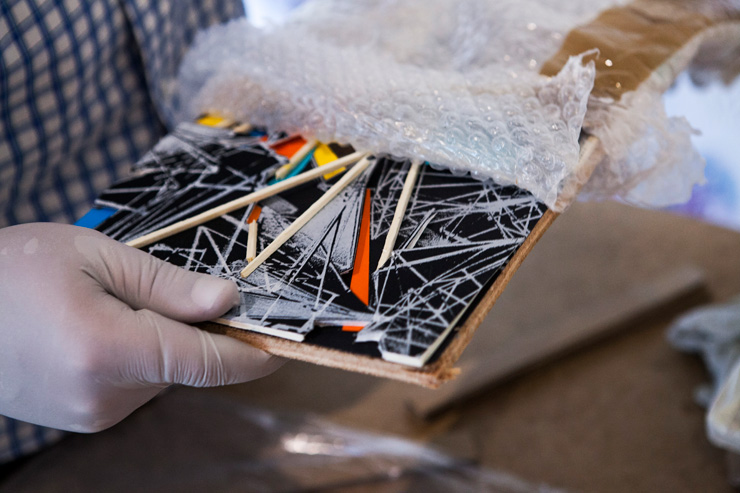
Gilbert1 (photo © Brock Brake)
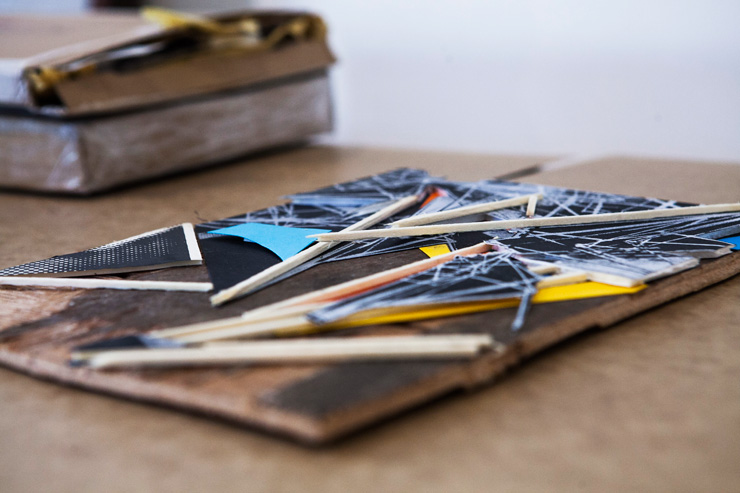
Gilbert1 (photo © Brock Brake)
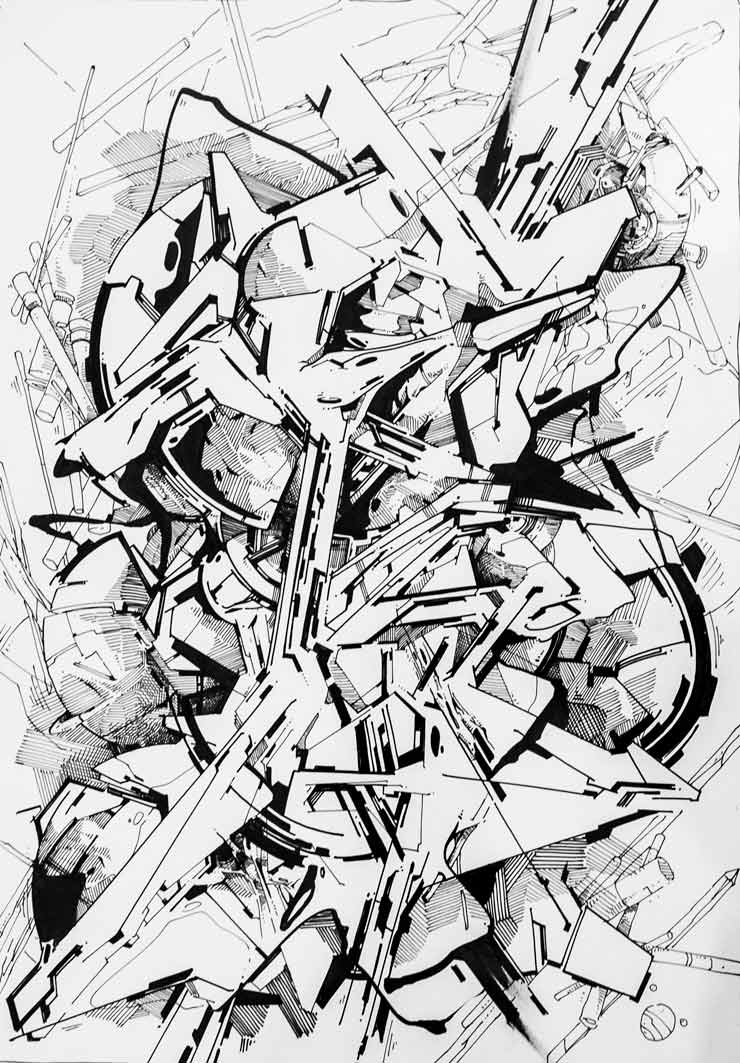
Dem189 (photo © Brock Brake)
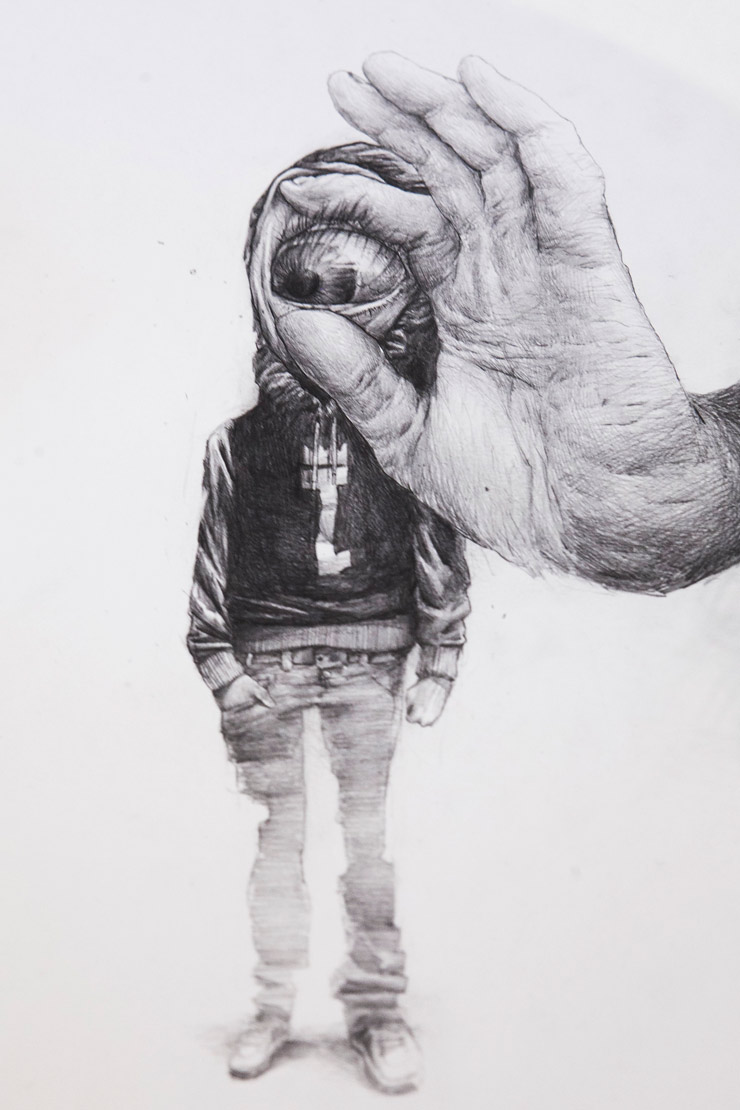
Bom.k (photo © Brock Brake)
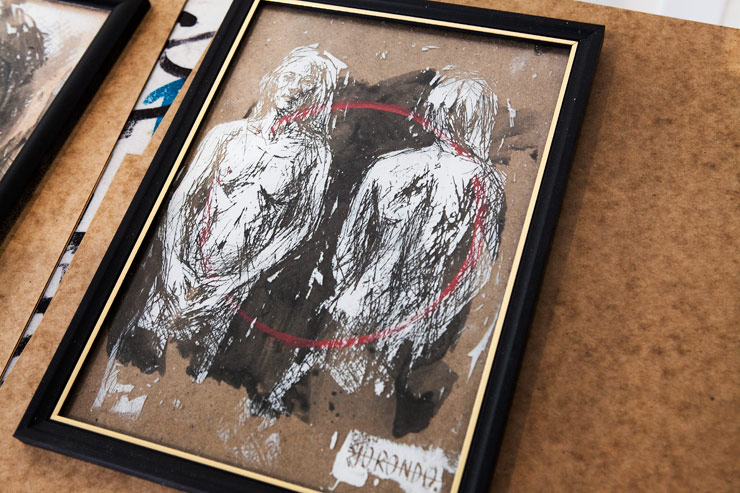
Borondo (photo © Brock Brake)
“A Major Minority” opens this Friday, March 14 at 1AM Gallery in San Francisco, CA.
Click HERE for more details on this show.
The Full Essay “A Major Minority” Group Exhibition by Poesia and EKG can be found HERE.
The interview answers from EKG were edited for length – please see his full responses on his Facebook page HERE.
We would like to thank Brock Brake for his excellent photos of the art and to Poesia and EKG for their thoughtful and insightful answers to our questions.
<<>>><><<>BSA<<>>><<<>><><BSA<<>>><><<>BSA<<>>><<<>><><BSA
Please note: All content including images and text are © BrooklynStreetArt.com, unless otherwise noted. We like sharing BSA content for non-commercial purposes as long as you credit the photographer(s) and BSA, include a link to the original article URL and do not remove the photographer’s name from the .jpg file. Otherwise, please refrain from re-posting. Thanks!
<<>>><><<>BSA<<>>><<<>><><BSA<<>>><><<>BSA<<>>><<<>><><BSA
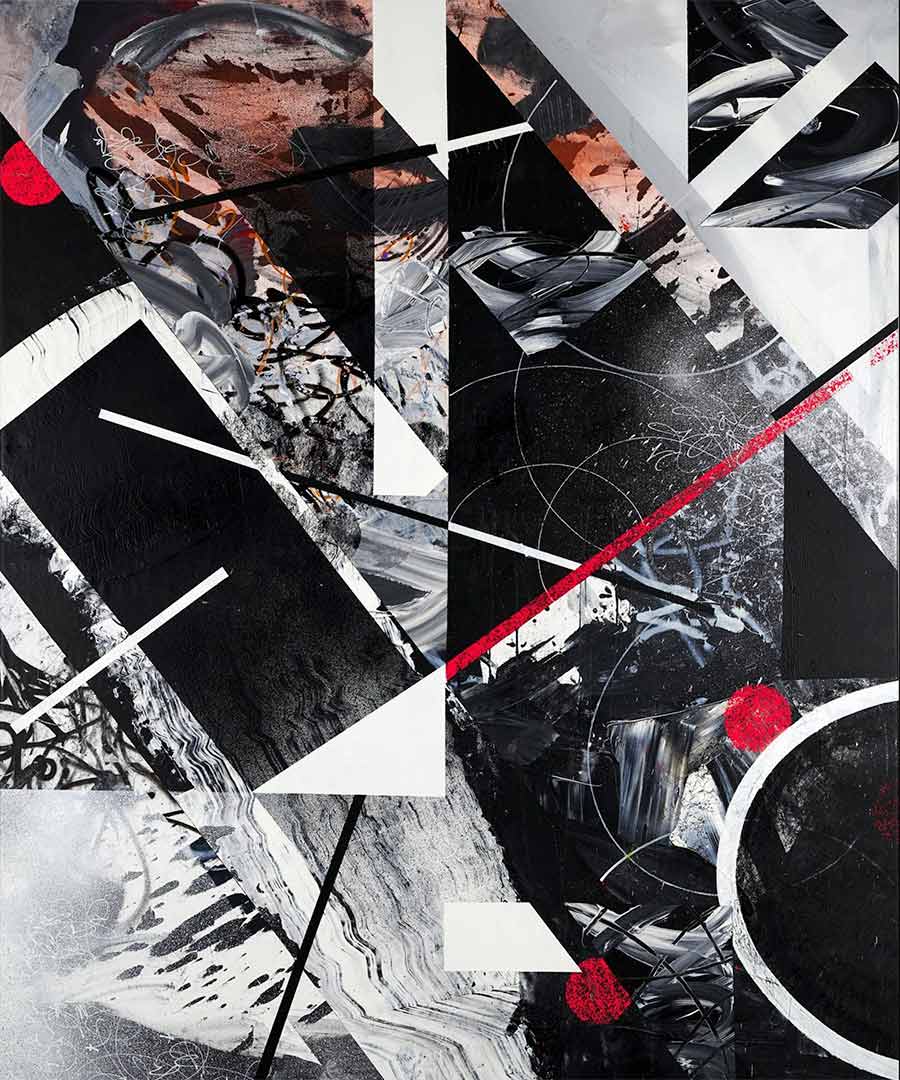
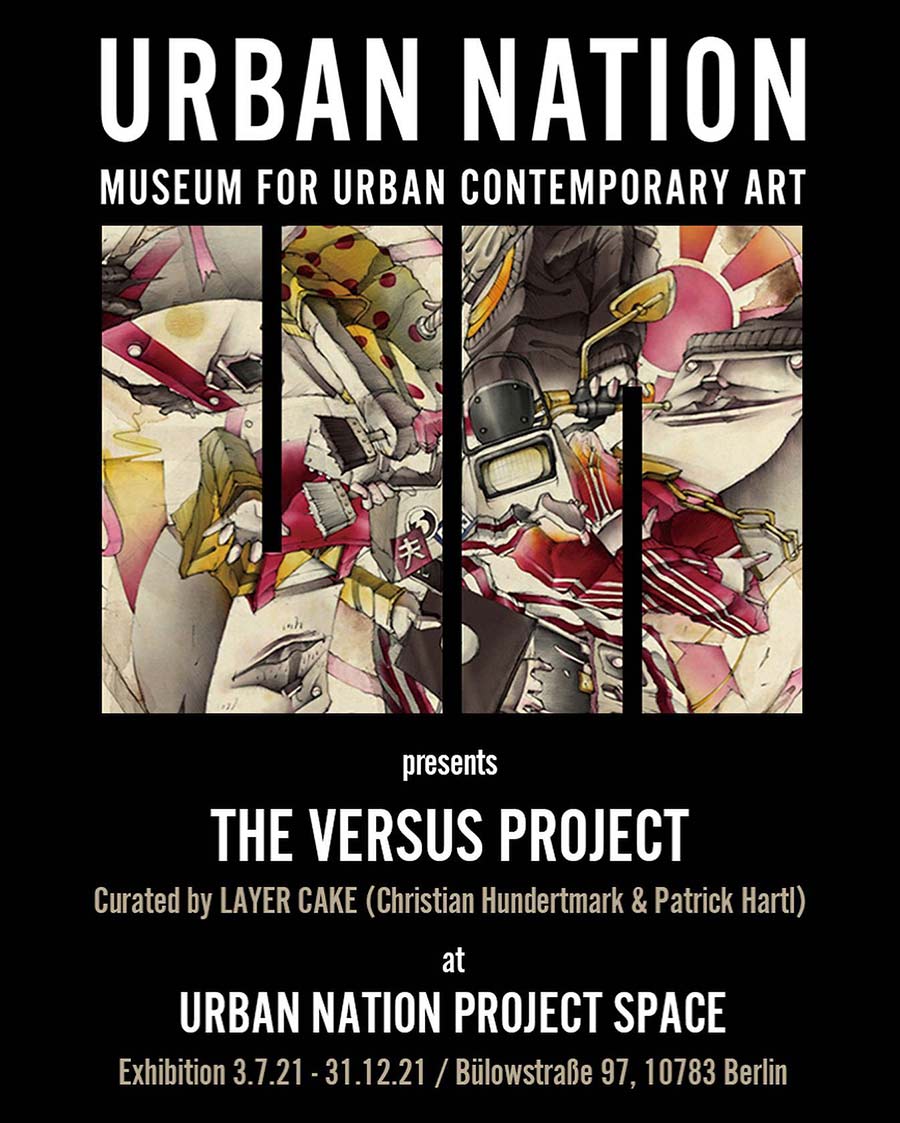

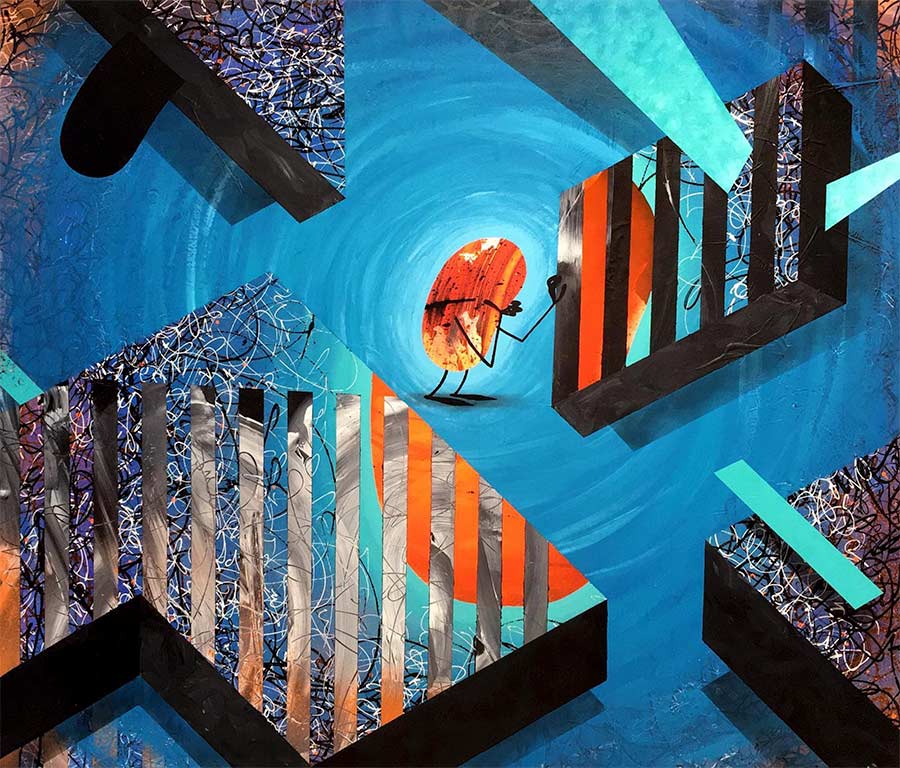
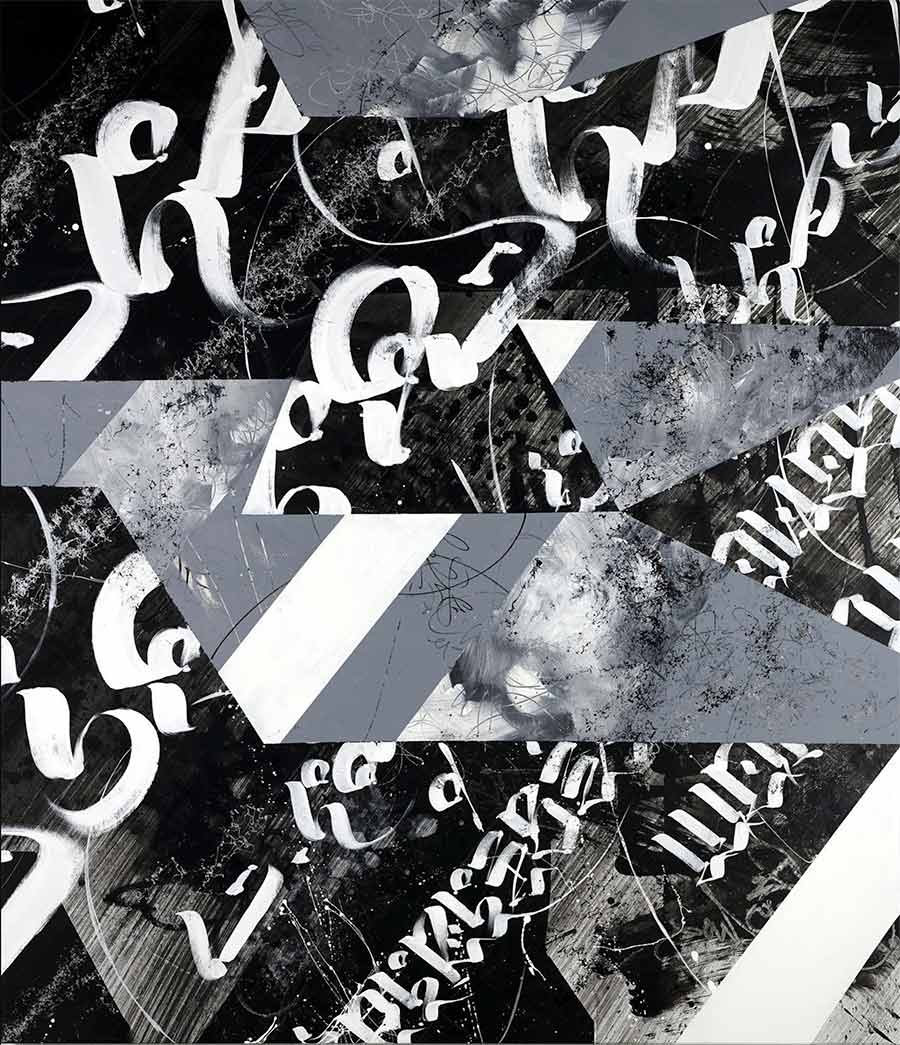
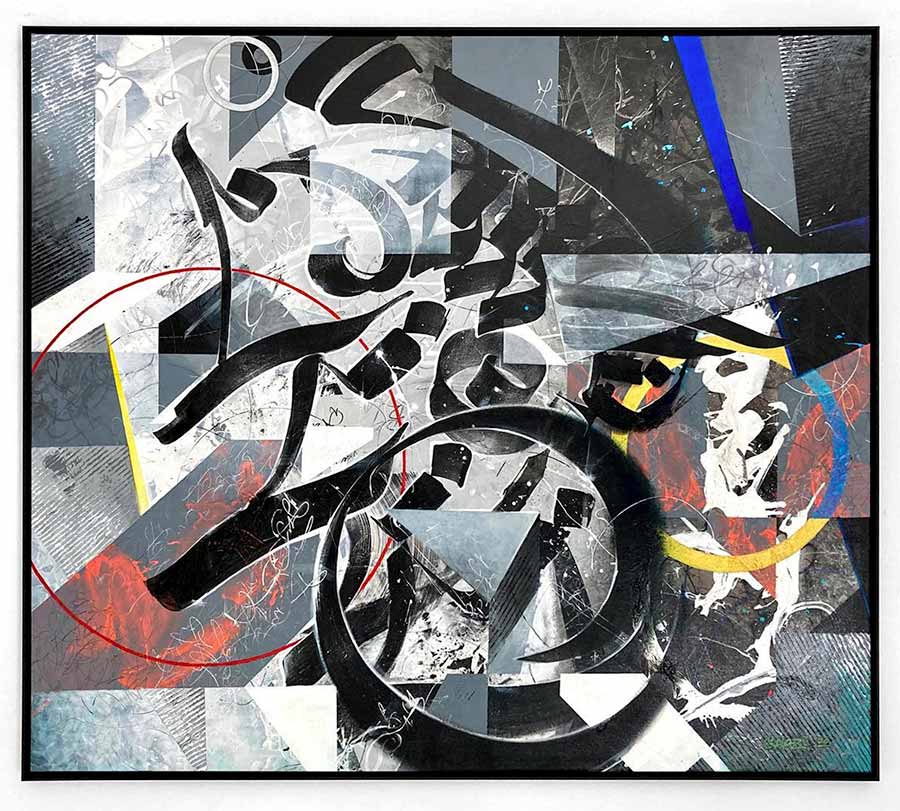
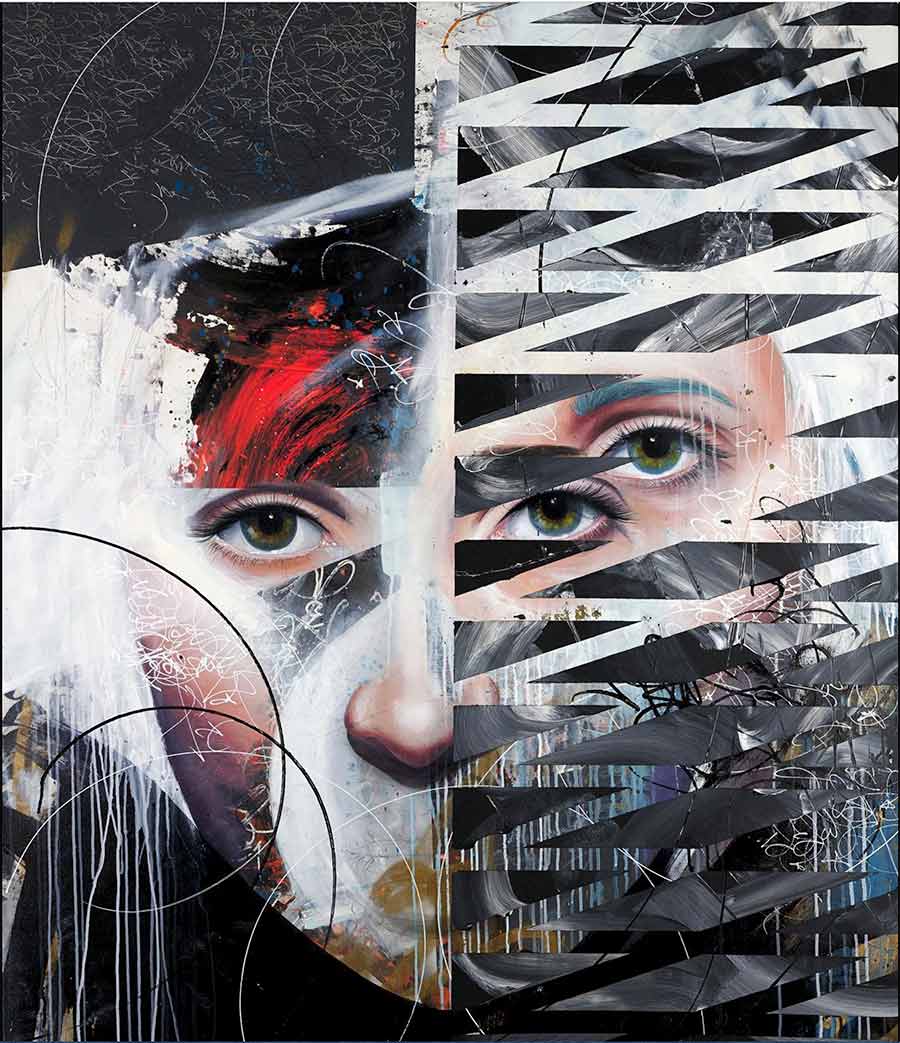
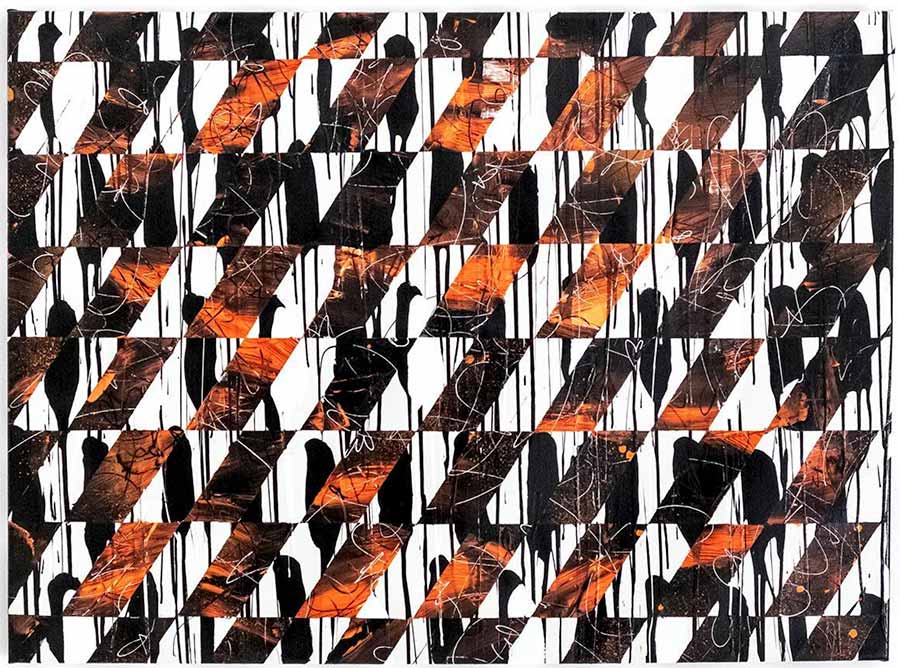

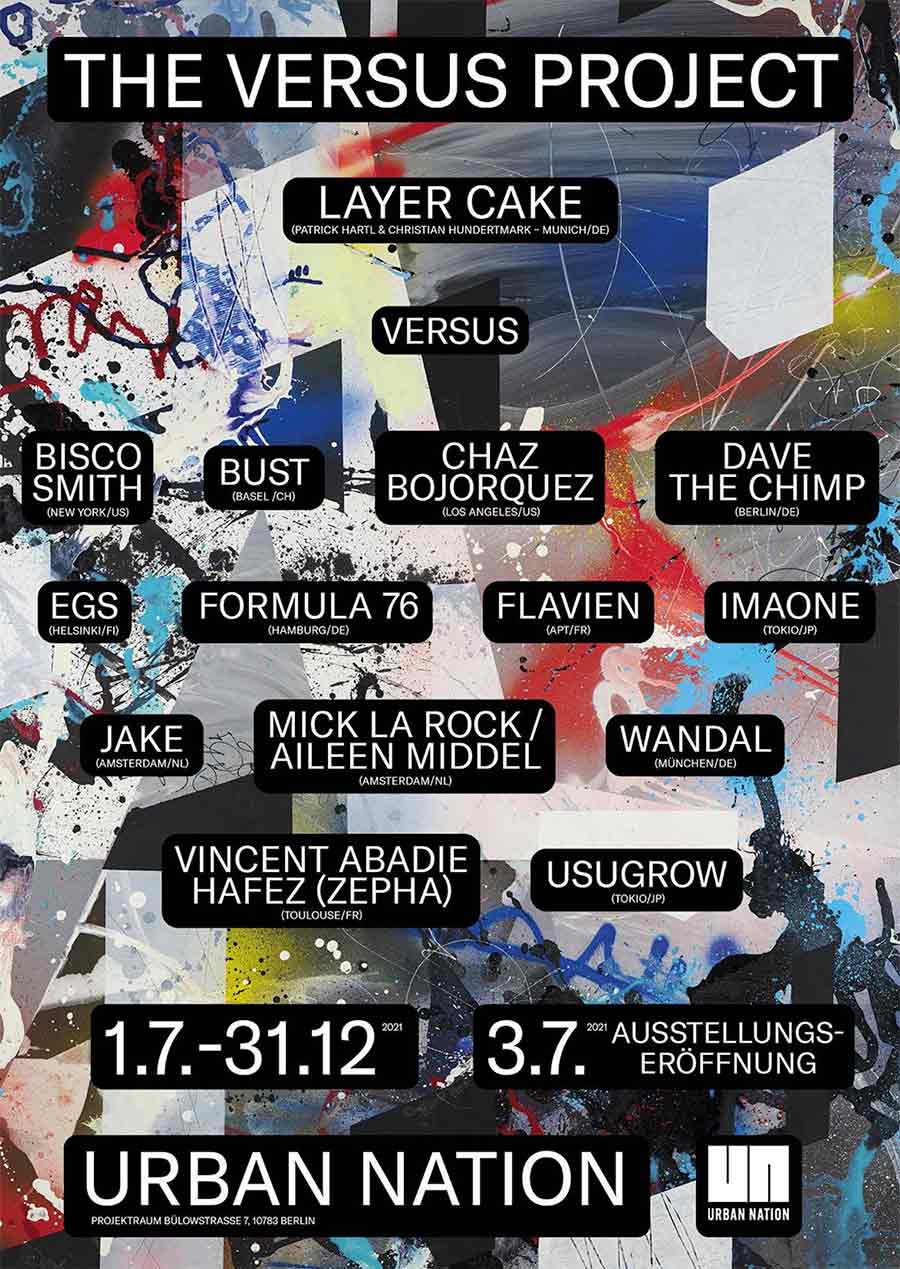
 BROOKLYN STREET ART LOVES YOU MORE EVERY DAY
BROOKLYN STREET ART LOVES YOU MORE EVERY DAY